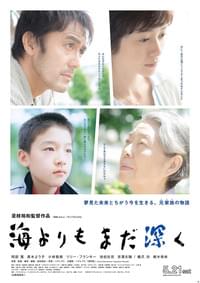I’ll Make It Myself!: Katsudon Fatale for Two
LM (CIR Ishikawa-ken, Anamizu, 2009-11) is the editor of The Ishikawa JET Kitchen: Cooking in Japan Without a Fight. Ze works in international student exchange; writes I’ll Make It Myself!, a blog about food culture in Japan and the US; curates The Rice Cooker Chronicles, a series of essays by JETs and JET alumni on the theme of cooking/eating and being alone in Japan; and admins The JET Alumni Culinary Group on LinkedIn.
Channel your inner katsudon fatale with this recipe, plus a review of hit anime Yuri!!! on Ice.
WITLife #309: An Evening of Umami and Shokuiku
WIT Life is a periodic series written by professional Writer/Interpreter/Translator Stacy Smith (Kumamoto-ken CIR, 2000-03). She starts her day by watching Fujisankei’s newscast in Japanese, and here she shares some of the interesting tidbits and trends along with her own obs ervations.
ervations.
Last night I had the opportunity to interpret for Chef Kiyomi Mikuni at an event at Japan Society entitled “Umami and Other Japanese Culinary Secrets.” Mikuni is an entertaining speaker whose wide-ranging presentation covered everything from how important it is to develop taste buds at a young age to working with Japanese children on 食育 (shokuiku, or dietary education). Mikuni runs the gourmet French restaurant Hotel de Mikuni in Tokyo, but his culinary journey started in a fishing village in Hokkaido. Growing up he would go out with his fisherman father, and enjoy the fruits of the sea bestowed upon them. At 15 he went to Sapporo to work as a chef at a hotel there before moving to Tokyo’s Imperial Hotel. At 20 he was sent to Geneva to be the chef at the Japanese Embassy, where he Read More
WIT Life #308: Silence
WIT Life is a periodic series written by professional Writer/Interpreter/Translator Stacy Smith (Kumamoto-ken CIR, 2000-03). She starts her day by watching Fujisankei’s newscast in Japanese, and here she shares some of the interesting tidbits and trends along with her own observations.
Last night I attended a screening of Martin Scorsese’s new film Silence, based on the 1966 novel 沈黙 (Chinmoku) by Shusaku Endo, himself a Japanese Catholic. It is the story of a Jesuit missionary sent to 17th century Japan, who is playe d with great nuance by Andrew Garfield. He and his followers endure horrible persecution during this period when 隠れキリシタン (Kakure Kirishitan or Hidden Christians) are targeted for their beliefs. Having lived in Kyushu I had a vague sense of what had taken place in Nagasaki at that time, but not the extent of the barbaric ways Christians were killed and tortured. Read More
d with great nuance by Andrew Garfield. He and his followers endure horrible persecution during this period when 隠れキリシタン (Kakure Kirishitan or Hidden Christians) are targeted for their beliefs. Having lived in Kyushu I had a vague sense of what had taken place in Nagasaki at that time, but not the extent of the barbaric ways Christians were killed and tortured. Read More
WIT Life #307: The Wonderful World of Shochu
WIT Life is a periodic series written by professional Writer/Interpreter/Translator Stacy Smith (Kumamoto-ken CIR, 2000-03). She starts her day by watching Fujisankei’s newscast in Japanese, and here she shares some of the interesting tidbits and trends along with her own observations.
Along with ramen and sushi, sake is a part of Japanese food and drink culture that is ubiquitous here in New York. But as someone who spent the majority of my time in Japan in Kyushu, I sometimes wonder why shochu doesn’t get its fair share of the acclaim. Down there shochu is the go-to drink, and since 90% of domestic production takes place at distilleries in Kyushu it is known as Shochu Island.
So I was thrilled when Japan Society asked me to interpret at its first ever event showcasing shochu, Distilled, Not Brewed: Discovering Shochu. The main speaker was Shinichiro Watanabe, CEO of Kyoya Shuzo and Chairman of the Committee on Shochu Planning at the Japan Sake and Shochu Makers Association. His presentation on shochu was for the uninitiated, and highlighted aspects of this distilled liquor such as its history, cultural significance and health bene fits.
fits.
To breakdown the basics of Watanabe’s presentation, the main way that shochu differs from sake is that it is distilled as opposed to brewed. Sake is made from rice whereas shochu can be made from ingredients such as sweet potato, barley and rice. The ingredient is determined by what Read More
WIT Life #306: 打ち言葉
WIT Life is a periodic series written by professional Writer/Interpreter/Translator Stacy Smith (Kumamoto-ken CIR, 2000-03). She starts her day by watching Fujisankei’s newscast in Japanese, and here she shares some of the interesting tidbits and trends along with her own observations.
I was in Japan on business for most of September, and while there I caught up on dramas, variety shows and news programs. One special feature I saw talked about recent trends in 打ち言葉 (uchi kotoba) or Internet slang that was born from cell phone communication. For example, perhaps the most well known uchi kotoba is あけおめ (ake ome), taking the place of the more formal 明けましておめでとうございます (Akemashite Omedetou Gozaimasu) or Happy New Year. Such language is said to be 内輪 (uchiwa) or inner circle, and knowing how to use it indicates you are part of a group.
Some new incarnations that I found interesting were よきよき (yoki yoki) for いいよ (ii yo), or “Sure/That’s fine.” It actually reminded me of the Kumamoto-ben よかよか (yoka yoka) with the same meaning, which I would hear often while living there on JET. One abbreviation I liked was り or りょ (ri or ryo), both short for 了解 (Ryokai) or “Understood/Gotcha.” Another way of conveying a similar sentiment is おけ (Oke) for “Ok,” though this doesn’t seem to make it easier to write. These uchi kotoba are constantly evolving, and who knows how far they will go…
2016 Japan Writers Conference in Tokushima
Posted by Tom Baker (Chiba, 1989-91).
The Japan Writers Conference is a free annual event for English-language writers, held in a different part of Japan each year. In 2016, it will take place on the weekend of Oct. 29-30 at Tokushima University in Shikoku. A good number of current and former JETs always take part, and one of them is this year’s conference host: Tokushima University Lecturer Suzanne Kamata.
 Suzanne has written several novels and compiled several anthologies and is an editor for www.literarymama.com. She and three other published authors will participate in a panel called “Inspiring Fiction: Where do You Get Your Ideas?”
Suzanne has written several novels and compiled several anthologies and is an editor for www.literarymama.com. She and three other published authors will participate in a panel called “Inspiring Fiction: Where do You Get Your Ideas?”
That panel is just one of about 30 presentations scheduled. JET alum and textbook author Todd Jay Leonard will give a lecture titled “Helpful Hints on How to Get Published in the EFL Market in Japan.” JET alum Elaine Lies, a Reuters journalist, will present “Food, Glorious Food,” a workshop on how to write evocatively about the emotional, sensory and nostalgic power of food. Current JET Victoria Vlisides, who writes for JapanTravel.com, will give a presentation called “Bust into the Japan Writing Scene.”
Poet and novelist Holly Thompson, who first came to Japan in connection with the pre-JET MEF program, will give two presentations. One is “Poems with Plot—A Narrative Poetry Workshop.” The other, with novelist Mariko Nagai, is a joint lecture on “Verse Novels Crossing Borders.”
For details on those and about two dozen other presentations, visit www.japanwritersconference.org or follow @JapanWritersCon on Twitter.
WIT Life #305: Happy Hour at MoMA
WIT Life is a periodic series written by professional Writer/Interpreter/Translator Stacy Smith (Kumamoto-ken CIR, 2000-03). She starts her day by watching Fujisankei’s newscast in Japanese, and here she shares some of the interesting tidbits and trends along with her own observations.
Back in March I didn’t have time to blog about my participation in the New Directors New Films festival held at Lincoln Center, but I had the chance to interpret for director Ryusuke Hamaguchi when his epic film Happy Hour was screened there. With a run time of 317 minutes it is not for the meek, but I can honestly say that it didn’t feel nearly as long as its 5+ hours and that it was a movie I thoroughly enjoyed. Perhaps because I am the same age as the four female 38-year old main characters, all amateurs who were selected for their parts via an acting workshop that Hamaguchi ran in Kobe.
As you can imagine, the film’s long run time allows it to delve deeply into each of the four women’s lives. The central thread is that of the character Jun (pictured here on the left), who is Read More
WIT Life #304: JAPAN CUTS 2016 comes to a close
WIT Life is a periodic series written by professional Writer/Interpreter/Translator Stacy Smith (Kumamoto-ken CIR, 2000-03). She starts her day by watching Fujisankei’s newscast in Japanese, and here she shares some of the interesting tidbits and trends along with her own observations.
This weekend marks the end of the 2016 JAPAN CUTS film festival. Due to a business trip midway through I wasn’t around as much as I would have liked, but I was able to attend the beginning and end to see some fantastic films.
Last night featured Tatsuya Mori’s FAKE, which looks at the 2014 controversy surrounding self-taught classical composer Mamoru Samuragochi. At that time, he was exposed by part-time university lecturer Takashi Niigaki as a fake. Niigaki claimed that Samuragochi could hear despite claims that he was deaf, and that because he didn’t know how to notate music Niigaki had been his ghostwriter during their 18-year tenure working together.
Within the media circus that emerges, Mori takes a closer look by spending time with Samuragochi, his wife and their photogenic cat at their Yokohama apartment. Although this serves as the film’s prime location, the viewer does not feel confined but instead drawn in to this he said/he said tale where true and false are not easily delineated.
At the post-screening Q&A, Mori stated his disdain for simple black and white explanations, and offered his view that there can be 100 versions of the truth. He makes this stance very clear with the final shot of the film (which follows the credits so stick around until the very end when you watch it!), which closes with an open-ended question that is left unanswered.
Tonight I’ll be going to see the very last film of the festival, The Actor. Hate to see it end but already looking forward to next year!
WIT Life #303: JAPAN CUTS 2016!
WIT Life is a periodic series written by professional Writer/Interpreter/Translator Stacy Smith (Kumamoto-ken CIR, 2000-03). She starts her day by watching Fujisankei’s newscast in Japanese, and here she shares some of the interesting tidbits and trends along with her own observations.
This week kicked off the 10th year of the JAPAN CUTS film festival at Japan Society, and if the initial films are any indication this year’s lineup looks as stellar as the nine previous. The opening film was Mohican Comes Home, and was introduced by director Shuichi Okita and co-star Atsuko Maeda. They were also both on-hand for a post-screening Q&A, where they revealed behind-the-scenes stories about filming.
Okita’s previous film The Woodsman and the Rain was shown at JAPAN CUTS 2012 (with an appearance by star Koij Yakusho!), and like this film Mohican is set in a rural location. The plot is of a young man (Ryuhei Matsuda) from a small island in Hiroshima, who hasn’t been back in seven years since living in Tokyo, where he scrapes by as the lead singer for a struggling death metal band. He decides to return home for a quick visit with his girlfriend (Maeda), who is pregnant and he intends to marry.
The film features a wacky cast of island characters, including his zany family with the always wonderful Masako Motai as the mother. Akira Emoto plays his father, who we quickly learn has been diagnosed with lung cancer. Matsuda’s character decides to stay longer than planned to take care of his dad. His bumbling attempts at connection are both relatable and touching, and the bonds between Read More
Suzanne Kamata is a Finalist for the Half the World Global Literati Award
Author/advocate Suzanne Kamata’s (Tokushima, ’88-’90) unpublished memoir Squeaky Wheels: Travels with my Daughter by Plane, Train, Boat, Tuk-tuk, Metro and Wheelchair has been named a finalist for the initial Half the World Global Literati Award.
Sponsored by Half the World Holdings, a woman-focused investment platform, this award intends to recognize an original story, screenplay, memoir, or novel featuring one or more female protagonists as the central character, and offering “a fresh perspective on the challenges and joys of women’s lives.”
According to research by Nicola Griffith, most major literary prizes over the past fifteen years have been awarded to works that did not have a woman at the heart of the story. This award will attempt to balance the equation. An international panel will determine the winner of the $US50,000 prize, however, anyone can vote for the People’s Choice Award until July 23. Here’s a link.
Here is a brief synopsis of Squeaky Wheels:
My thirteen-year-old daughter Lilia can’t walk, but she wants to travel the world. Born fourteen weeks premature, Lilia is deaf and affected by cerebral palsy. Her primary language is Japanese Sign Language, and she uses a wheelchair to get around. At the Tokushima School for the Deaf, Tokushima, Japan, which she has attended in one capacity or another since she was about two years old, she is on the special ed track, which doesn’t include English and social studies. Even so, she is wildly curious about other countries and interested in learning her mother’s native tongue. When she told me that she wanted to go to Paris, I vowed to find a way even though I didn’t have a full-time job. In SQUEAKY WHEELS, I write about my effort to open up the world at large to my daughter as her own world seems to be shrinking. As she becomes heavier and less portable in this country short of wheelchair ramps, her accessibility has decreased. However, we attempt to confront and overcome at least some of the challenges of traveling with a wheelchair. Among other things, I write about our mother-daughter trips to the art island of Naoshima in Japan’s inland sea where we sleep in a museum; to Paris – including our arguments about what to pack and what to wear, Lilia’s response to the art and food and sights of the city, accessibility to the Eiffel Tower; and to the United States where we explore the caves of Tennessee and the monuments of Washington, DC. At the same time, I struggle to overcome my fears for the future and revise my hopes and dreams for my daughter
WIT Life #302: New York Japan Cinefest
WIT Life is a periodic series written by professional Writer/Interpreter/Translator Stacy Smith (Kumamoto-ken CIR, 2000-03). She starts her day by watching Fujisankei’s newscast in Japanese, and here she shares some of the interesting tidbits and trends along with her own observations.
Last week I had a chance to check out the 5th annual New York Japan Cinefest, whose mission is to introduce Japanese themed films and discover new talent in filmmaking. In the past I have attended this festival hosted at Asia Society and always loved it, and this year too did not disappoint. I made it to the first night of this two night event, which showcased six short films varying in length from 5 to 40 minutes.
I was most lookin g forward to the final film A Beautiful Person, as it was the newest work from the Kumamoto-born director Isao Yukisada and featured a cast exclusively from Kumamoto (with an appearance from the ubiquitous Kumamon!). I had to laugh once they started speaking as the dialogue was in heavy Kumamoto dialect, adding to the film’s authenticity. The story didn’t captivate me as much as I had hoped it would, but it was like a time capsule as it had been filmed pre-earthquake. Especially after recently going back to Kumamoto and witnessing the horrible damage the castle has undergone, it was really special to see Read More
g forward to the final film A Beautiful Person, as it was the newest work from the Kumamoto-born director Isao Yukisada and featured a cast exclusively from Kumamoto (with an appearance from the ubiquitous Kumamon!). I had to laugh once they started speaking as the dialogue was in heavy Kumamoto dialect, adding to the film’s authenticity. The story didn’t captivate me as much as I had hoped it would, but it was like a time capsule as it had been filmed pre-earthquake. Especially after recently going back to Kumamoto and witnessing the horrible damage the castle has undergone, it was really special to see Read More
WIT Lif #301: 是枝監督の新作!
WIT Life is a periodic series written by professional Writer/Interpreter/Translator Stacy Smith (Kumamoto-ken CIR, 2000-03). She starts her day by watching Fujisankei’s newscast in Japanese, and here she shares some of the interesting tidbits and trends along with her own observations.
I seem to have a knack for timing my business trips to Japan in sync with releases of my favorite director Hirokazu Kore-eda’s films, and this time is no exception. Last night I had the chance to check out 海よりもまだ深く (Umi yori mo mada fukaku) or After the Storm), a welcome addition to Kore-eda’s impressive body of work. It features the familiar cast of characters who can be found throughout the rest of his films, such as Hiroshi Abe and Kirin Kiki paired once again as mother and son, and Lily Franky.
Abe plays Ryota, a character with the same name as the one he played in Kore-eda’s 歩いても歩いても (Aruito mo aruite mo or Still Walking). This Ryota is a formerly award-winner author who barely makes ends meet by gambling and his job as a private investigator. He struggles to pay child support to his ex-wife in order to be able to see his son on a monthly basis. Despite being accustomed to Kore-eda’s leisurely pace, I found the film a bit slow at the beginning. However, as the story unfolded I started to be drawn more into the stories of the characters. Perhaps it was because I’m far from home and missing my own family, but I found my eyes filling with tears during some of the tender family moments. I loved the deceivingly simple but significant shot of Read More
WIT Life #300: Kumamoto earthquakes
WIT Life is a periodic series written by professional Writer/Interpreter/Translator Stacy Smith (Kumamoto-ken CIR, 2000-03). She starts her day by watching Fujisankei’s newscast in Japanese, and here she shares some of the interesting tidbits and trends along with her own observations.
Over a week has passed since the earthquakes down in Kyushu, and things have settled down somewhat but it is still a very scary situation. I spent my time on JET in Kumamoto, so this unexpected disaster was especially hard-hitting. I have a business trip to Tokyo next month, so I’m planning to go down to Kyushu during that time to help out with recovery efforts. It’s hard to be so far away and not be able to do much, but at this point due to the instability the best way to help seems to be donations.
In that vein, here are links to two organizations that are currently accepting contributions. The first is a fund created by the Japanese American Association of NY (JAA, hosting its Sakura Matsuri from 11 am-1 pm at Flushing Meadows Park tomorrow!) devoted exclusively to Kyushu Earthquake Relief (www.jaany.org), and the second is Japan Society’s general Earthquake Relief Fund (www.japansociety.org/page/earthquake).
Finally, here’s the song Kumamoto produced by NY-based jazz pianist Senri Oe and featuring Mamiko Taira on vocals. He wrote this haunting tune right after the disaster as a way to deal with his feelings of helplessness. He describes this music as his own way of providing relief goods, as unlike other supplies a song won’t spoil nor can there be too much or too little of it. It might be just what some people are looking for, and can be accessed by anyone via the Internet. In the spirit of the potential solace it offers, enjoy.
I’ll Make It Myself!: Black Sesame and Pear Muffins
LM (CIR Ishikawa-ken, Anamizu, 2009-11) is the editor of The Ishikawa JET Kitchen: Cooking in Japan Without a Fight. Ze works in international student exchange; writes I’ll Make It Myself!, a blog about food culture in Japan and the US; curates The Rice Cooker Chronicles, a series of essays by JETs and JET alumni on the theme of cooking/eating and being alone in Japan; and admins The JET Alumni Culinary Group on LinkedIn.
Have I told you, dear readers, how much I love Lottie and Doof‘s “Black Sesame and Pear Cake”? When I could get Western pears, I loved making that cake in Japan, where black sesame is a common ice cream and wagashi flavor. I wanted to adapt the flavors of this cake into something smaller, less sweet, and more portable for weekday breakfasts, hence the muffins.
WIT Life #299: Portlandia’s Noodle Monster
WIT Life is a periodic series written by professional Writer/Interpreter/Translator Stacy Smith (Kumamoto-ken CIR, 2000-03). She starts her day by watching Fujisankei’s newscast in Japanese, and here she shares some of the interesting tidbits and trends along with her own observations.
own observations.
Last night IFC’s Portlandia Season 6 finale featured a tsukemen ramen monster taking over the town, with potentially disastrous results. This monster was brought to life when leftover tsukemen noodles, intended to be just dipped and not soaked, were dunked into their broth due to a lack of refrigerator space.
At a meeting deconstructing what happened, the Mayor (Kyle MacLachlan) recognizes that it’s as if the noodles were “baptized against their will.” They then realize that the only solution is to dip the noodles again to restore them to their original form, and one proposal is filling a city pool with ramen broth for this purpose. I found the episode’s overall handling humorous, though the Asian cliches felt a bit hackneyed. In conjunction with the episode, IFC is offering the chance to win 10 years worth of ramen!




